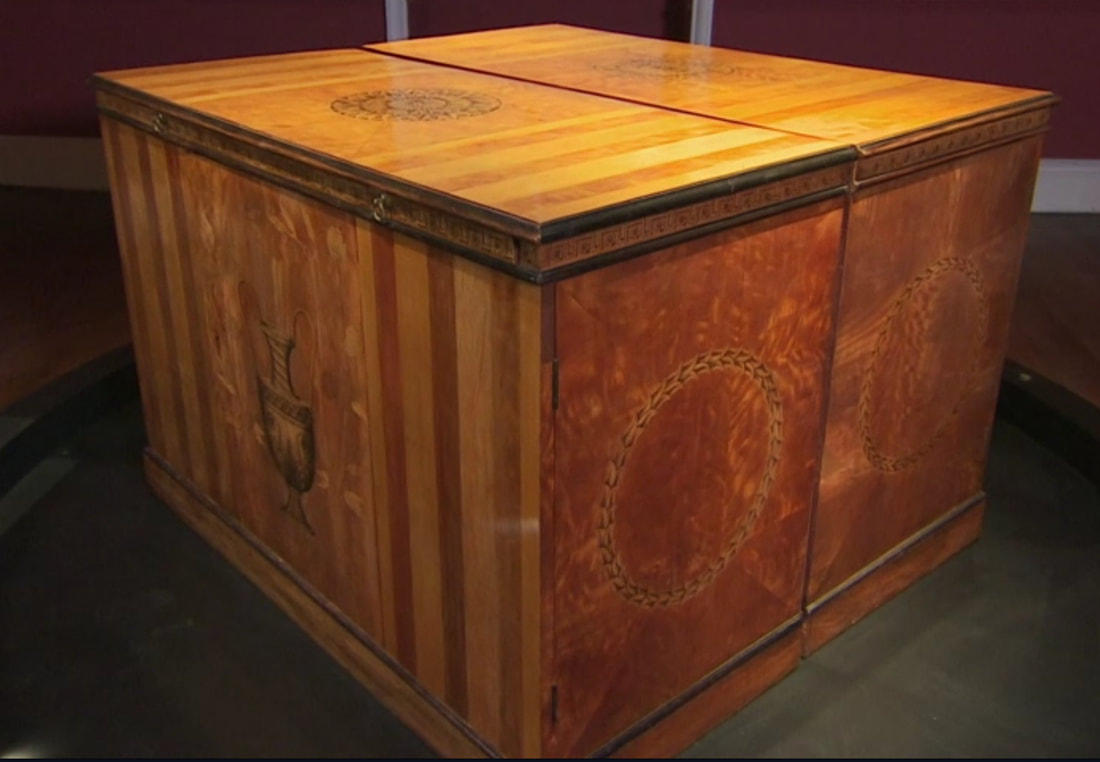 Today’s episode of the BBC programme Flog It came from Croome Court, Worcestershire. Some of the artefacts have been displayed in original ways, including two Ince & Mayhew commodes, which are now placed back to back in the centre of the room. Paul Martin the presenter was very enthusiastic about them. “This is pure theatre. I love it, absolutely love it.” He explained the two commodes should be either side of a rather large imposing fireplace creating perfect symmetry. Now they are displayed back to back. He said they are by Mayhew & Ince, possibly the most important partnership in the mid-eighteenth century in cabinet work. The cabinets were made to show off great craftsmanship and to show off wealth. They were made in 1764. The programme also mentioned the Tapestry Room being shipped out to the Metropolitan Museum of Art in New York. This included the Ince & Mayhew sofas, chairs and the pier mirror they made designed by Robert Adam. You can watch the programme on BBC iPlayer for another 29 days. It is Flog It Series 15:44 Croome 49
I recently attended an interesting lecture on The Genius of Robert Adam. The speaker, Janusz Karczewski-Slowikowski , was a fan of Chippendale so most of his furniture examples were by Chippendale. However Ince & Mayhew are known to have had a long-standing relationship with Robert Adam and they provided a number of items of furniture to his designs.
The first known collaboration was for the 6th Earl of Coventry at Croome Court where Ince & Mayhew produced the earliest known examples of marquetry commodes in 1764. They also contributed to the Tapestry Room, producing a pier glass designed by Robert Adam, which was 8’ 9” tall x 5’6” wide and carved with a shell on top, drops of husks and goats heads all in the very best Double Burnish’d Gold.i The Earl was billed £35 for this mirror in 1769. The firm also provided the chairs and settees for the Tapestry Room, the base for the marble top pier table and sent a crew to hang the tapestries and apply the seat covers. The whole of the Tapestry Room is now in the Metropolitan Museum of Art in New York. There are bills to show Ince & Mayhew worked with Robert Adam to produce furniture for Sir John Griffin Griffin 1767 at Audley End or his London house 10 New Burlington Street; also for Lord Kerry in 1771 for his Portman Square residence and for Lady Shelburne’s London house. It is also possible they provided commodes for Syon House as they are mentioned in the Duchess of Northumberland's notebooks. The Kimbolton cabinet was produced for Elizabeth, Duchess of Manchester to designs by Robert Adam in 1774. Its purpose was to exhibit eleven Florentine pietra dura plaques. This cabinet is now in the Victoria and Albert museum, London. In 1775 Ince & Mayhew produced a commode for the Countess of Derby’s Dressing room, part of the redesign of Lord Derby’s house in Grosvenor Square by Robert Adam. The drawings for this commode are at the Soane Museum and the design was faithfully copied by William Ince as he interpreted the drawing into a solid piece of furniture. The only difference he made was to change the feet so the cabinet did not fall over when the central door was opened. The bill sent by Ince and Mayhew to the Earl of Derby dated 3rd November 1775 made it clear that the Commode was from a Design of Messrs. Adams The firm also provided two Tripod Pedestals to the Earl and the total bill of £205 5s 6d was settled on 24th April 1776.ii According to the Soane Museum, the commode is one of very few pieces from 23 Grosvenor Square to have survived, and remains in the possession of the 19th Earl of Derby, It is now thought that Ince & Mayhew were also responsible for the commode at Osterley Park iii. Hugh Roberts has made this suggestion as the commode has similarities to the Derby House commode. He has noted that the design of the inlaid and partly coloured marquetry tops follow Adam’s design almost exactly. iWills, Geoffrey English looking-glasses:a study of the glass, frames and makers (1670-1820) 1965 Country LifeiiRoberts, H. (1985). The Derby House Commode. The Burlington Magazine, 127(986), 275-283. Retrieved from http://www.jstor.org/stable/882065 iii Rowell, Christopher, Apollo NT Historic Houses & Collections Annual 2012 Interesting news in the Antiques Trade Gazette about a pair of satinwood inlaid demi-lune card tables sold in Chichester by Stride & Sons on 31st March. They were estimated at £800-£1200 described as George III with later additions. Apparently they would have been made into a single table in the 19th century, but were later taken apart again. There was a great deal of interest as the tables are ‘very much in the manner of Ince & Mayhew’, and nine phone lines were set up to take bids. The tables were sold to the London trade for £36,000. Thanks to cousin Matt Coles for alerting me to this information.
A recent Sotheby’s auction included a serpentine commode attributed to Ince & Mayhew, estimated at £20,00-£40,000. It was dated around 1770 and made of marquetry, padouk and mahogany. According to the catalogue ‘The serpentine form, shallow frieze drawer, rounded corners and bracket feet, and deeply etched foliate decoration all feature on other examples long associated to Mayhew and Ince’. This piece was not sold. In the same auction a lovely octagonal satinwood and wenge tilt-top table, dated circa 1780, and described as in the manner of Ince & Mayhew was sold for £5000, estimate £1000 to £1,500. Interesting times! The Royal Collection includes a side table attributed to Ince & Mayhew, which is in the East Gallery of Buckingham Palace. It is made of gilded walnut and pine and has a marble top. The frieze has a crouching lion in the centre. This lion is similar to one on a medallion on a side table supplied to the Earl of Kerry by Ince & Mayhew, as well as one on a serpentine table at Kenwood.[1]
The table in Buckingham Palace came from Woodhall Park in Hertfordshire and was made for Sir Thomas Rumbold. According to Historic England, Sir Thomas Rumbold bought the estate around 1777, from John Boteler for £85,000. Rumbold, who was the Governor of Madras for the East India Company, demolished the remains of the house which had partly burnt out in 1771, building a new one designed by Thomas Leverton in the neo-classical style. In 1782-3, when Rumbold returned from several years abroad, an extensive planting programme was put in hand, with plants supplied by the firm of William Malcolm and Son, Royal Nurserymen and 'Surveyors, Nursery and Seedsmen' of Stockwell (Debois 1985). Rumbold sold the estate to Paul Benfield in 1794, who sold it on to Samuel Smith (d 1834) in 1801. Samuel Smith was a partner in the family banking business. He succeeded his father as M.P. for St. Germans, and voted with Pitt over the Regency. Upon Smith's death his son Abel Smith inherited the estate, which continued in the family into the twentieth century. Ince & Mayhew were Rumbold’s principal furniture suppliers. A pair of side tables made of sabicu, amaranth and holly, also with marble tops, was sold at Christie’s in 2007 for £156,000. According to the catalogue notes these tables are linked to the Woodhall Park furniture. An article was written for Country Life magazine in 1930 about this furniture, mentioning some Grecian tripod candelabra-stands which were inlaid with varie-coloured woods and trompe l'oeil flutes, like the tables. Sabicu comes from a West Indian tree and resembles mahogany; amaranth is another name for purpleheart wood. Thomas Leverton was responsible for a number of eighteenth century houses, most of which have now been demolished or remodelled, as well as Charing Cross fire engine house. His works include:
[1] Lucy Wood, Catalogue of Commodes The British Antiques Dealers’ Association held their annual fair from 15th to 21st March this year in Chelsea, London.
One of the exhibitors was James McWhirter Antiques Ltd who included an Ince & Mayhew mirror in their collection. Made around 1785 it was described as a George III carton pierre mirror with a central plate from the Queen Anne period. Carton pierre is like papier-mache, being based on pulped paper fibre extended and hardened with substantial amounts of glue, whiting, and gypsum plaster, and sometimes alum and flour. Carton-pierre was pressed into moulds and allowed to harden, the result being mid-way between plaster and papier-mache in weight and density. It was often used by Robert Adam. This mirror is surmounted by a classical urn which has trailing husks and swags inset with classical oval roundels. The husks are a classic Ince & Mayhew decoration. A picture of the mirror featured in an article in Apollo magazine. It was priced at £11,800. There are around a dozen items of furniture attributed to Ince & Mayhew for sale in the listings of BADA with different antique dealers. A friend of mine reports that she heard mention of William Ince in a radio play on Radio 4 the other day. In the play someone was saying she had to go to Ince to collect some deal.
It is likely that this was Lady Shelburne who wrote in her diary in 1768 “To Mayhew and Inch where is some beautiful cabinet work and two pretty cases for one of the rooms in my apartment, and which though they are only deal, and to be painted white, he charges £50 for.”[i] We know from her diary that Lady Shelburne visited Ince and Mayhew on a number of occasions. In 1765 she wrote: Saturday the 28th We all went to Ince the cabinet makers to see our furniture for the drawing room and my dressing room at Bowood. Gave Ince plans from Herculaneum and Palmyra for ornaments for a Comode of Yew tree wood inlaid with Holly and Ebony.[ii] This was the little scene enacted in Amanda Vickery’s television programme, At Home with the Georgians: A Woman’s Touch, broadcast in November 2015. It was wonderful to see an actor playing William Ince. [i] Encyclopedia of Interior Design edited by Joanna Banham [ii] Vickery, A. Behind Closed Doors Yale University Press, New Haven & London 2009 p.169 Citation: Bowood Archives, Lady Shelburne's diaries, vol 3 (1766), f.1, vol 1 ff.10,13,15,16 It was a delight to come across some information about Charlotte Grace Cowell, grand-daughter of William Ince, who was a miniaturist painter. She was born on the 13th October 1811, daughter of George Cowell and Isabella Ince, who had married in St Mary’s Hornsey in 1795 when William Ince was Church Warden. Charlotte was the youngest of their six children.
In 1834-1835 she won the Silver Isis medal for an original miniature from the Royal Society of Arts. She exhibited at the Royal Academy in 1851, two portraits being listed against her name; the late Levi Ames, Esq. and the daughter of J.O.Hanson, Esq. She was described as Cowell Miss Grace Charlotte (afterwards Mrs F. Dixon) miniature painter of 12 Upper Gloucester Street. She married Frederick Henry Dixon on 11th October 1851, two days short of her 40th birthday, at St Martin’s in the Fields. Frederick was also a portrait painter. According to The Dictionary of British Women Artists[i] she was active between 1851 and 1875 having been instructed by Frederick Crucikshank a portrait painter and miniaturist and François Théodore Rochard (French, 1798-1858) who also produced portrait miniatures and watercolours. Bonhams sold a painting of hers in 2003. It was described as A bearded and bespectacled Gentleman, wearing black coat over white shirt and blue cravat signed on obverse and dated G Dixon 1873, and on the reverse, Mrs. F. Dixon/ Miniature Painter/ 1873, fitted red leather case Oval, 108mm. (4 1/4ins.) high Another surviving painting is a miniature portrait described as Oil on Ivory Portrait of a Toddler Holding a Rose, unsigned, but by Charlotte Dixon. On the obverse it is inscribed by Cowell Writing Painter Gilder No.16 Little New Street Shoe Lane Fleet Street According to the Dictionary of British Women Artists, Grace Cowell visited Paris, but travelled mostly around Britain, producing portraits in miniature, and large portrait heads in black and white chalk. Her portraits apparently included such subjects as the Madonna, Caesar Borgia and Richard Bethel, the Lord Chancellor. It was interesting to see in the 1841 census that her older unmarried sister was with their parents in Devon, but Grace is not there. She may have been out of the country as I cannot find her. It seems likely that her father gave her financial support; he was a wealthy city merchant. In his will, proved in 1846, he left everything to his wife, Isabella, to be divided between the children on her death ((apart from daughter Isabella who had received financial support on her marriage). Their mother died in the summer of 1852, so Grace would probably have been able to support herself and her painter husband. I have not yet found any surviving work by him. [i] Gray, Sara, The Dictionary of British Women Artists Lutterworth Press, 2009 There is some interesting information about an Ince & Mayhew Pembroke Table which is for sale at Nicholas Wells Antiques Ltd. It is described as one of the finest 18th Century Pembroke tables ever made and, from the photographs, it certainly looks to be a wonderfully preserved example of their work. A full description of the table is given along with some superb photographs and an in-depth explanation of the different woods used. In the centre there is a satinwood oval, crossbanded in kingwood, which is framed in boxwood & mahogany lines, surrounded by the harewood veneers. This is also crossbanded in kingwood with boxwood and mahogany lines and has an ebonised moulded edge. The veneers are laid on Honduras mahogany. Harewood is created by boiling English sycamore veneer in a solution of ferrous (iron) sulphate which turns it a silvery-grey colour. Apparently in the 17th century the roots of sycamore trees were treated with ferrous sulphate for several years to turn the wood grey naturally. It is an expensive process, though it is possible to do it yourself, as explained by the Redbridge Marquetry Group! When the table was first made the satinwood would have been yellow and the kingwood purple, a very striking combination with the silver-grey. The table is described as A Museum quality masterpiece from two of the most influential designers & makers from the 18th Century. I have written to Nicholas Wells to ask what is known about its provenance.
On 17th November Christie's are holding an auction in London entitled The English Collector: English Furniture, Clocks and Portrait Miniatures. Amongst the items for sale is a very attractive Ince & Mayhew bowfront commode, with harewood, rosewood-crossbanding and inlaid satinwood.
What I especially like about it is that it has four graduated drawers, getting larger in size as they descend. It is dated around 1770 and the estimate is £12,000 to £18,000. There are strong similarities between this commode and ones at Broadlands supplied to Henry Temple, 2nd Viscount Palmerston, for the Book Room. It has bell flowers in the marquetry and ebonised edge mouldings. The ring handles are very similar to those on other commodes at Broadlands, and to an Ince & Mayhew commode sold by Christie's in 2007. |
Author
Sarah Ingle is the great great great great grand-daughter of William Ince and has been researching her family history for a number of years. She thoroughly enjoyed the detective work involved in tracing William’s lineage. Archives
December 2022
Categories |
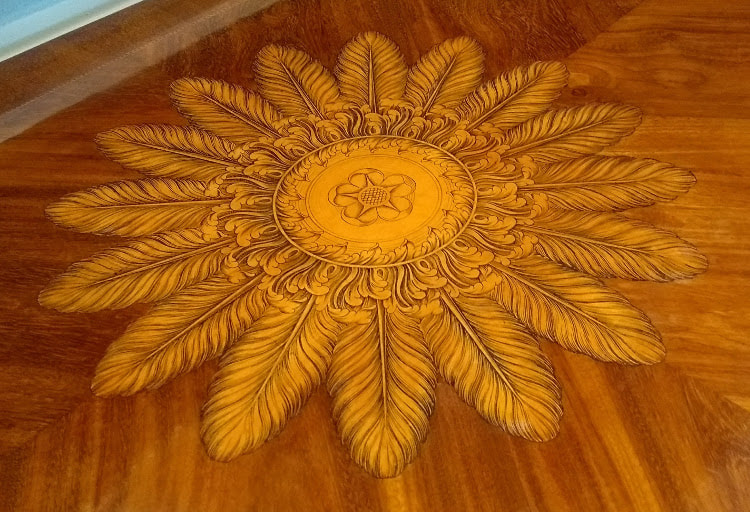
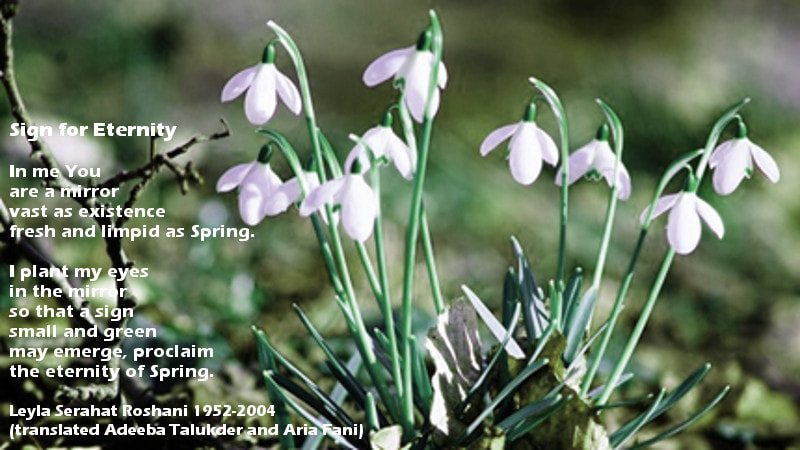
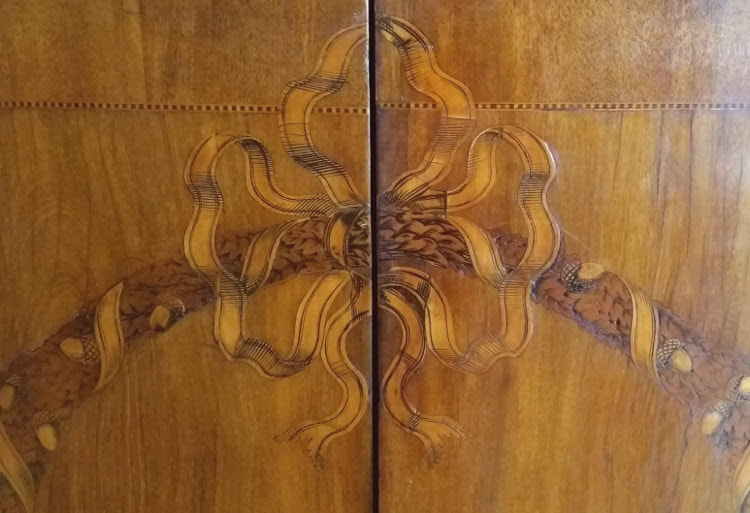
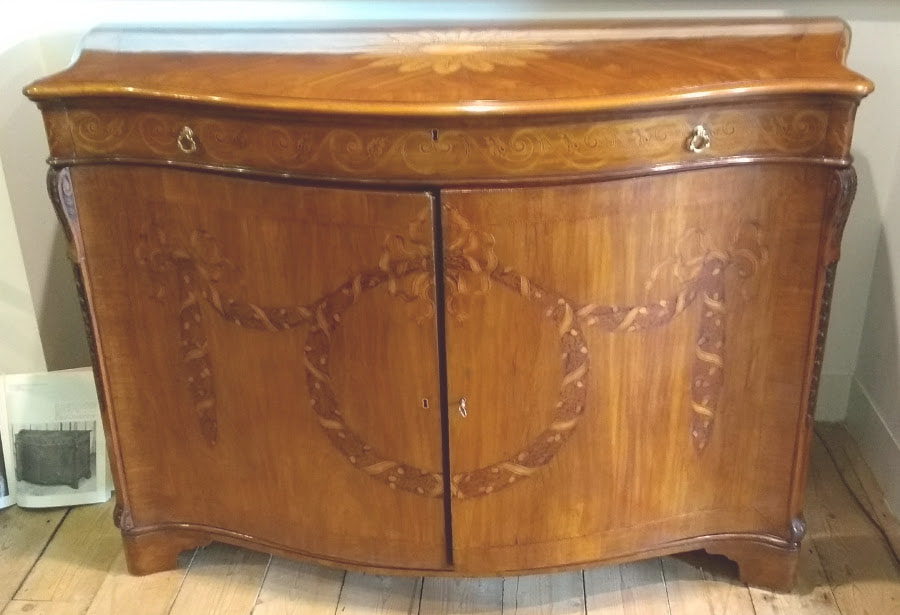
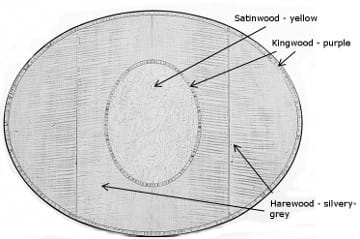

 RSS Feed
RSS Feed